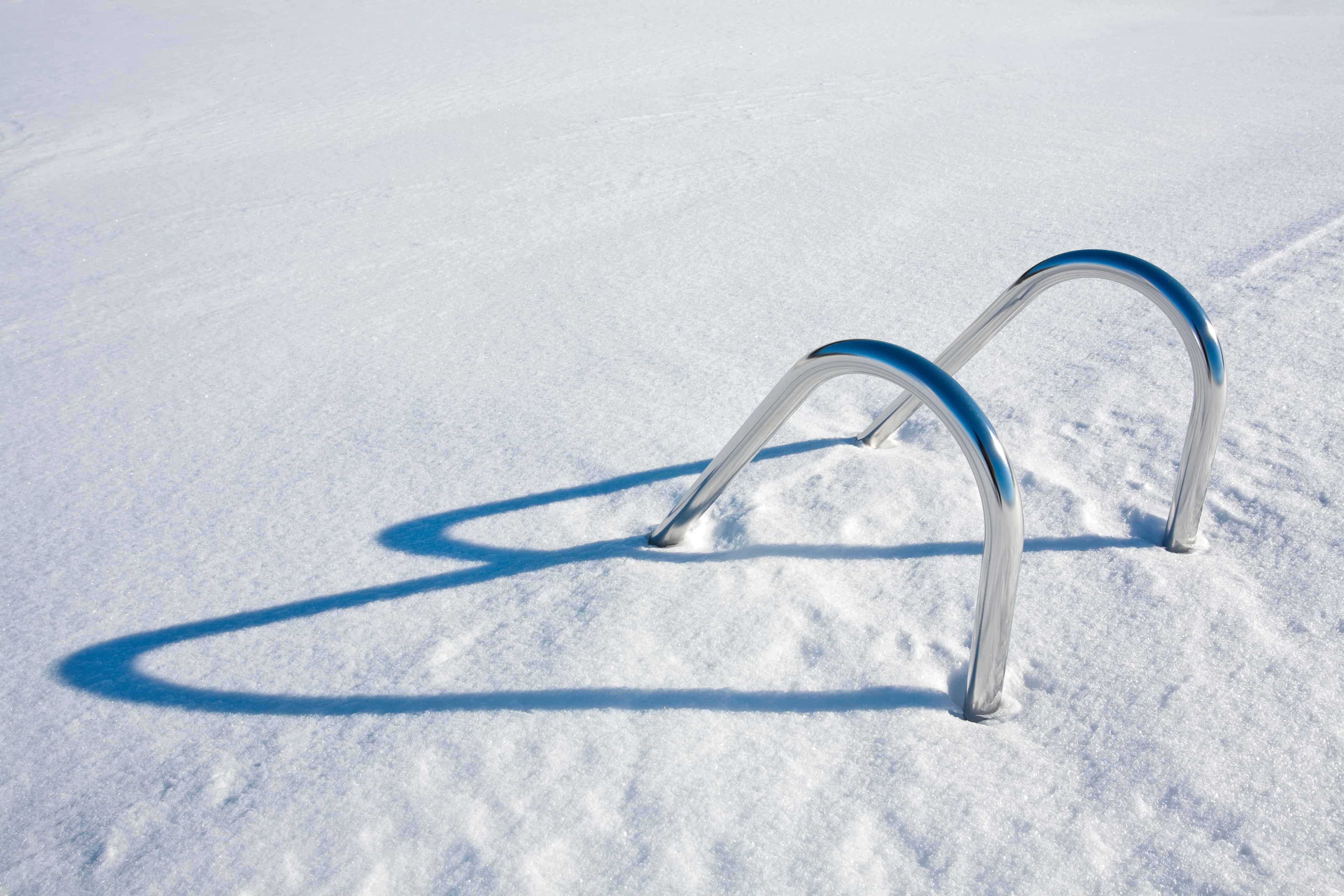While you can add salt to a saltwater pool whenever it’s required, most chlorinators stop producing chlorine when water temperature drops below 50°F in the case of Hayward models or as low as 60°F for other brands.
Opening your pool too early in the season or closing it too late in the autumn can be problematic because at that point, adding salt won’t help at that time if the water temperature is too cold for the chlorinator to work.
Below we’ll talk about when you should typically add salt to your pool and some considerations to be aware of.
What temperature should a saltwater pool be to add salt?
In theory you can add salt to your pool whenever it’s needed. But depending on the model of your chlorinator, it will shut down and stop producing chlorine when the water temperature drops below a certain level to protect the salt cell from damage.
The lower the water temperature, the less your pool requires chlorine. So at some water temperature typically between 50°F and 60°F depending on the chlorinator brand and model, your system will shut down and stop producing chlorine.
Your pump can still run and everything else keeps running. But no chlorine will be produced because the salt cell is triggered to shut off by the low water temperature.
In the case of Hayward salt chlorination systems, a water temperature below 50°F typically triggers this protective feature.
So this means that in the late fall when swimming pool season is typically over as the summer has passed, the water temperature drops as the weather gets colder and at some point will trigger the shutdown.
And in the spring when you’re getting ready to open your pool, should you open the pool when the water temperature is still below 50°F, your Hayward chlorinator won’t start producing chlorine until the water temperature goes up.
So you’re kind of balancing not opening your pool too early or closing it too late unless you want to manually add chemical chlorine to the water.
When should you add salt to your saltwater pool?
If you have a modern saltwater chlorinator with a live salt computerized reading, check it once every week at a minimum to see how it’s tracking. Alternatively or in conjunction with the live reading, you can use salt water pool test strips to measure salt manually.
For some chlorinators such as the Hayward brand, a low salt warning alert is triggered at 2600 ppm but the salt cell keeps operating. If the salt level drops to 2300 ppm or less, a very low salt warning is triggered and the salt cell will stop producing chlorine.
Maintaining a salt reading of 3200 ppm is recommended as it’s high enough that you won’t suddenly see a low salt warning since the reading is well within the standard salt range of 2700 ppm and 3400 ppm.
When does a saltwater pool need more salt added?
When you salt level drops below 2600 ppm is when you should be adding more salt in, if not before. You should even look at adding salt in when it drops to say 2900 ppm or so. That way, you don’t have to worry about the salt level getting critically low when you might forget to check the levels and find that it has dropped so low, your chlorinator shuts off.
Not good in the middle of the hot, sunny pool season! When salt is low, it puts more strain on your chlorinator and salt cell to produce enough chlorine to keep the pool water crystal clear.
But there are also a few events that will see you adding salt to your pool more specifically:
The two times you typically add salt to your saltwater pool are:
- Pool opening: In the spring when opening your pool for the summer is when the salt level tends to be low especially if you drain water from the pool during closing. You lose a great deal of salt and need to replace it, it’s that simple.
- Halfway through summer: Midway through the pool season (i.e. halfway through the summer) is when you often need to top up your salt. During the pool season, you’ll lose salt from splashing and draining the pool if you need to lower the water level (when you get heavy rain for example). If you have a filtration system that involves back washing, you’ll also lose salt that needs to be replaced, too.
Summary
Salt can be added to your salt water pool as required but typically you’ll add the most salt during the pool opening in the spring and midway through the pool season.
If you backwash your pool filter or otherwise drain large amounts of water at times, you may have to add salt more frequently. Important to note: Salt doesn’t evaporate but there are a number of reasons salt is lost in your pool which explains why it needs to be topped up!
If you’d like to learn more about how salt works in your salt water pool, check out these additional articles I’ve written:
How To Add Salt To Your Pool (Instructions)

